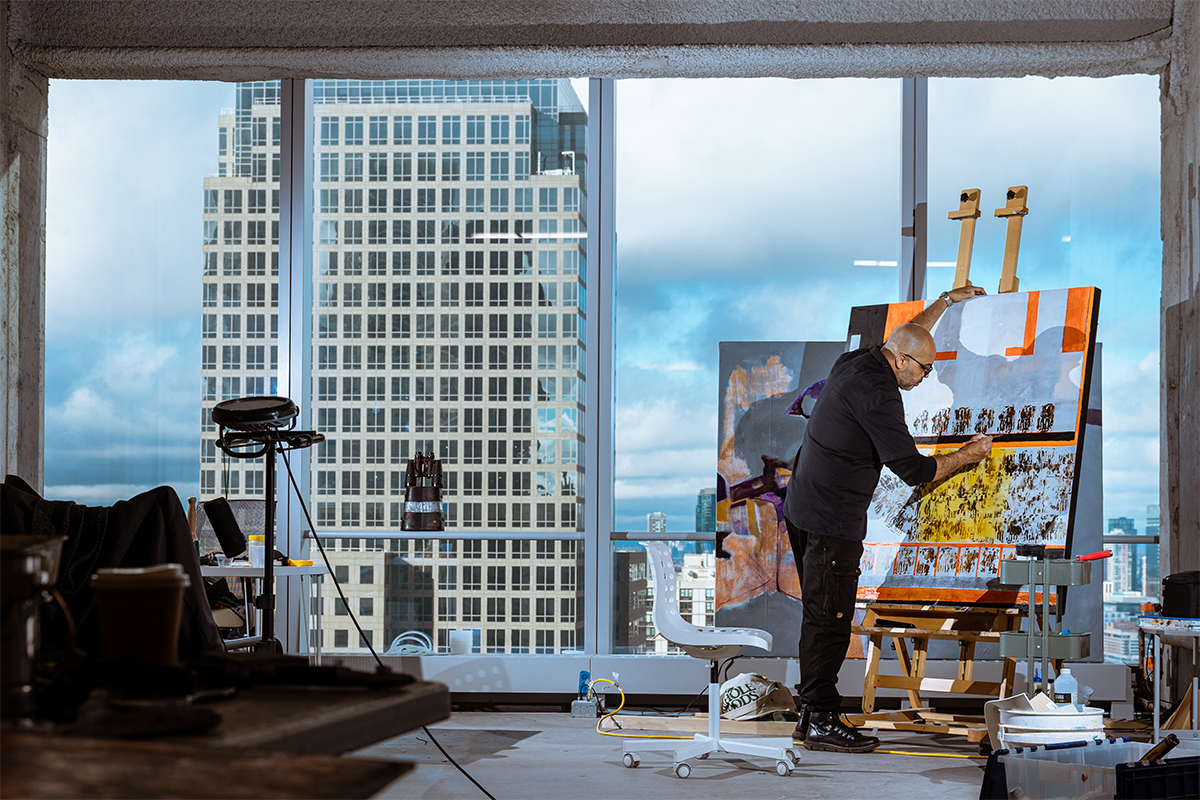
Artist Jared Owen during his residency at the World Trade Center. Photo by Josh Katz
With the support of Silverstein Properties, Silver Art Projects was founded by Cory Silverstein and Joshua Pulman in 2018. Here, the two philanthropists speak to LUX Contributing Editor, Samantha Welsh, about providing a space for underrepresented artists in an iconic location, the World Trade Center, New York City.
LUX: How did you meet?
Cory Silverstein: It’s a really interesting story! Joshua and I met in college and bonded over art. I was exploring a work I was interested in by Julio Le Parc, and I knew Joshua was very knowledgeable about art – so I approached him one day in the library. That is how our friendship and interest in supporting artists started.
LUX: Who or what were your inspirations?
Cory Silverstein: My grandfather, Larry Silverstein, and Michael Bloomberg are two of my biggest inspirations, largely for their philanthropic endeavours that focus on the arts in New York City. Our residency program Silver Art Projects was primarily inspired by K11 in Hong Kong and Manifesto in Paris.
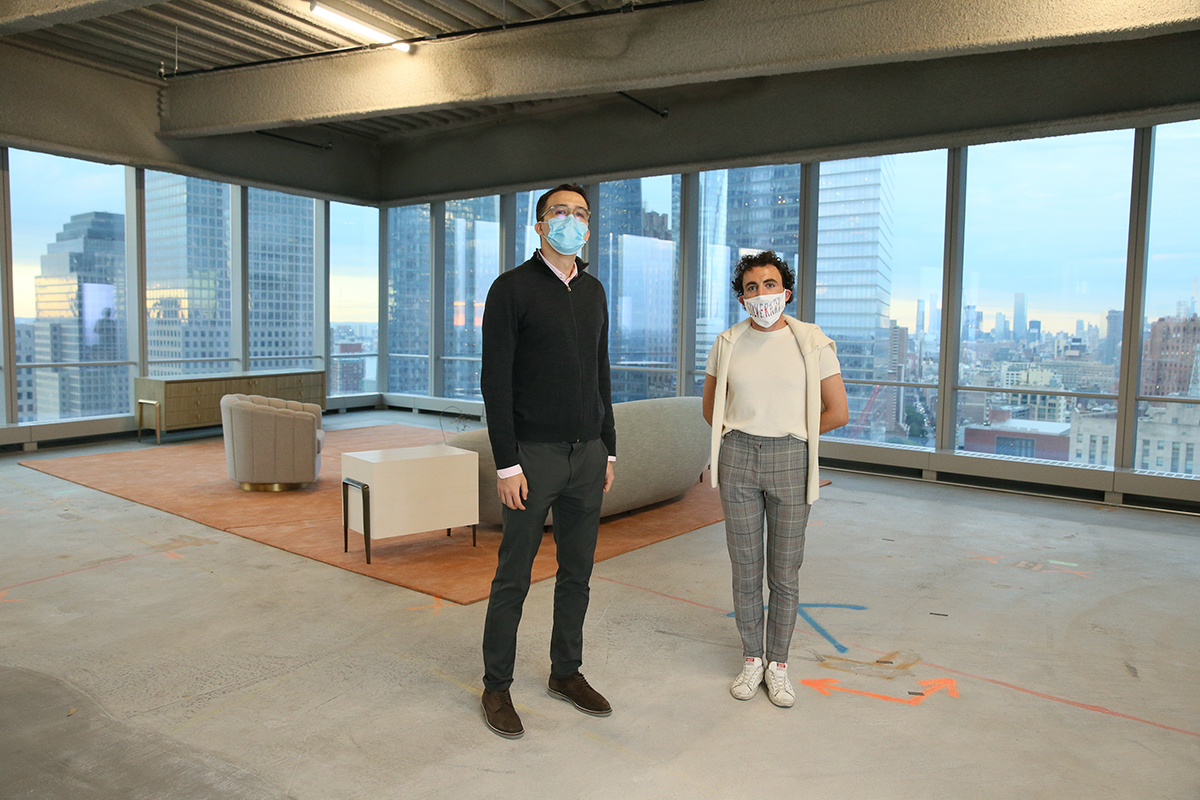
Cory Silverstein and Joshua Pulman at the opening of the World Trade Center Artist Residency
LUX: What drove you both to found Silver Art Projects?
Cory Silverstein & Joshua Pulman: We observed a great demand for studio space in Manhattan as artists have been forced to move further and further from the galleries they work with and the institutions who that inspire them. We wanted to support these artists, and together with the commitment of Silverstein Properties to nurturing art in Lower Manhattan, we were able to establish Silver Art Projects.
LUX: How would you say you are disrupting arts patronage?
Joshua Pulman: We are providing access to some of this country’s most premier real estate to a group of up-and-coming artists, all made possible by the generous support of foundations and individuals as well as unique corporate social responsibility efforts from companies in the area. In this way, we have been able to enhance the neighbourhood while supporting artist communities beyond it.
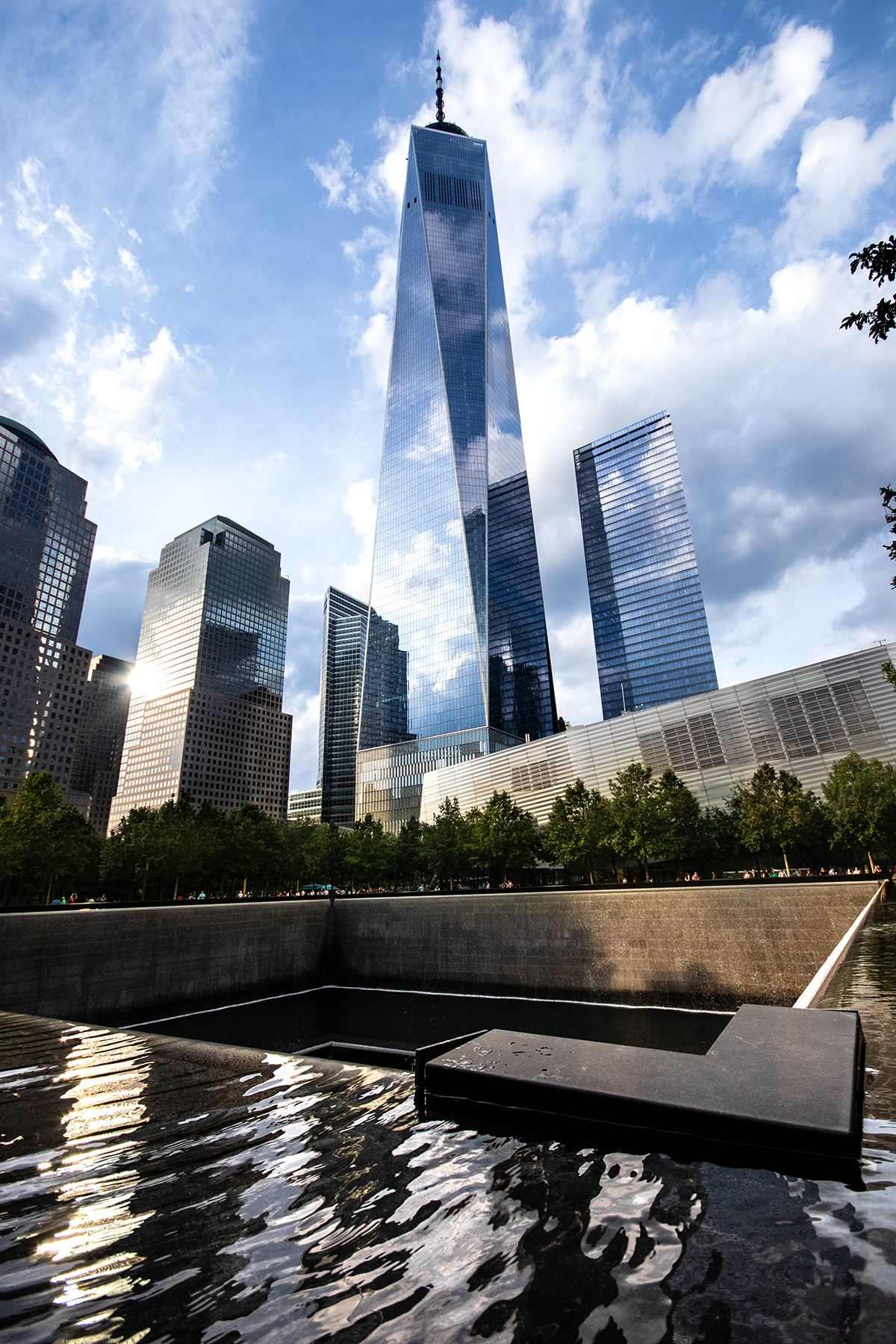
Larry Silverstein was the developer of the rebuilt World Trade Center complex in Lower Manhattan. Photo by Julie di Majo
LUX: The world watched with collective horror the destruction of the World Trade Center and its communities on 9/11. Each of us remembers where we were that day. How does Silver Arts Projects go beyond renewed real estate?
Cory Silverstein: 9/11 was a tragedy that impacted everyone, but it also reminded us of our collective humanity and the societal need for community engagement. Hope emerged from the adversity as well as a desire to rebuild and re-engage. For me, there was a personal commitment and obligation on behalf of my family to nurture culture in Lower Manhattan and across the city, but this was something that resonated with the wider neighbourhood. Art brings people together, and the World Trade Center is an important and iconic site to do that. There has been an evolution of artist-led programs and residencies in the area, and we are hoping to continue that legacy with Silver Art Projects.
Follow LUX on Instagram: luxthemagazine
LUX: What measurable impact have you had so far working with marginalised communities?
Joshua Pulman: As Silver Art is at the epicentre of commerce in New York City, our program focuses on enabling artists to achieve more sustainable financial and business practices. Looking back at our first cohort, eighty-five percent of artists who came to Silver Art Projects without gallery representation achieved it after the program. Several artists have also gone on to achieve other impressive accolades, from press coverage in prominent publications to awards and institutional recognition. Ultimately, we gauge the impact Silver Art Projects has by our artists’ long-term ability to support themselves through their art practice.
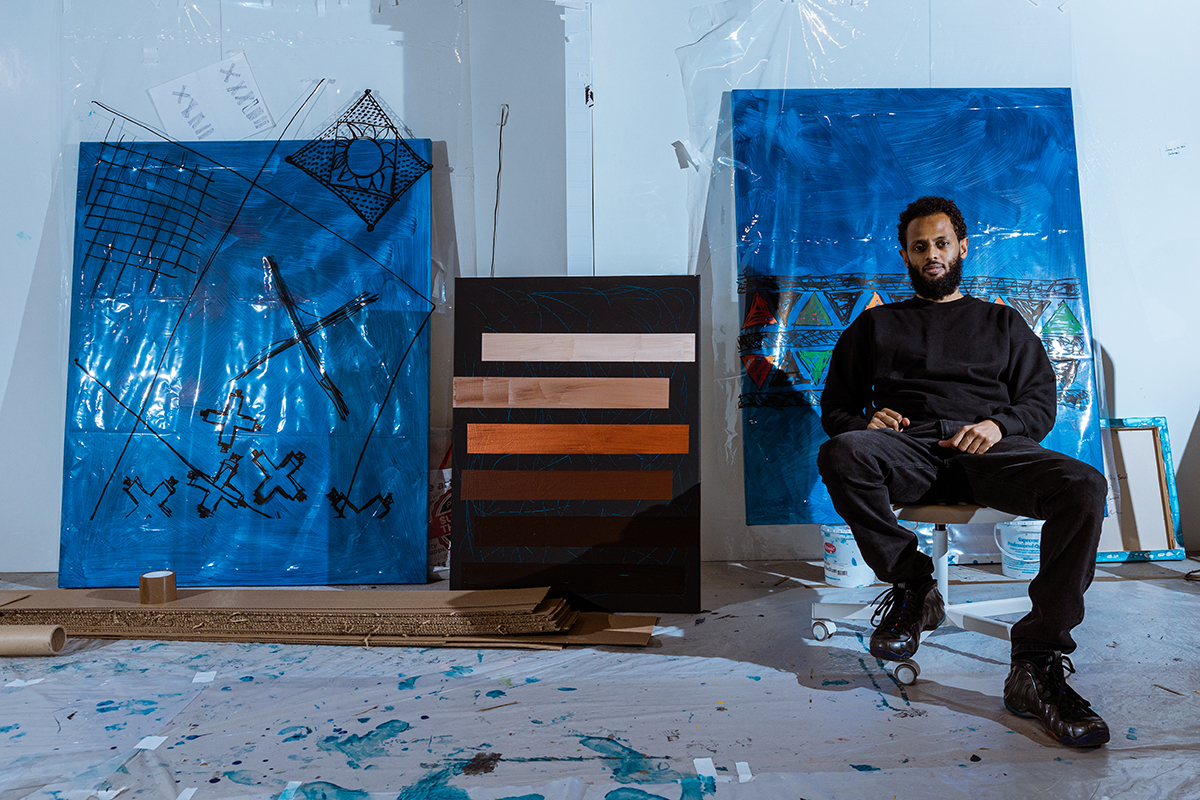
Tariku Shiferaw during his residency at the World Trade Center. Photo by Josh Katz
LUX: How do you manage the engagement between emerging artists and artist activists?
Joshua Pulman: Some artists who joined our Social Justice Cohort are active activists in their communities, while others seek to incorporate narratives addressing social justice into their practices. By creating a melting pot of these artists in one place, we have seen pure magic happen at the intersection of artistic practice and activism.

Helina Metaferia during her residency at the World Trade Center
LUX: Which mentors have particularly stood out and why do you think they are so effective?
Cory Silverstein and Joshua Pulman: All three mentors who support the 2021-2022 artist cohort really stand out:
For Freedoms and Hank Willis Thomas provide monthly Wide Awakes Sessions at Silver Art Projects. Artists are invited to participate in monthly disorientation sessions, encouraging artists to connect in an open forum by reimagining the future together. This has been effective in bringing together our community of artists and giving a voice to everyone in our cohort.
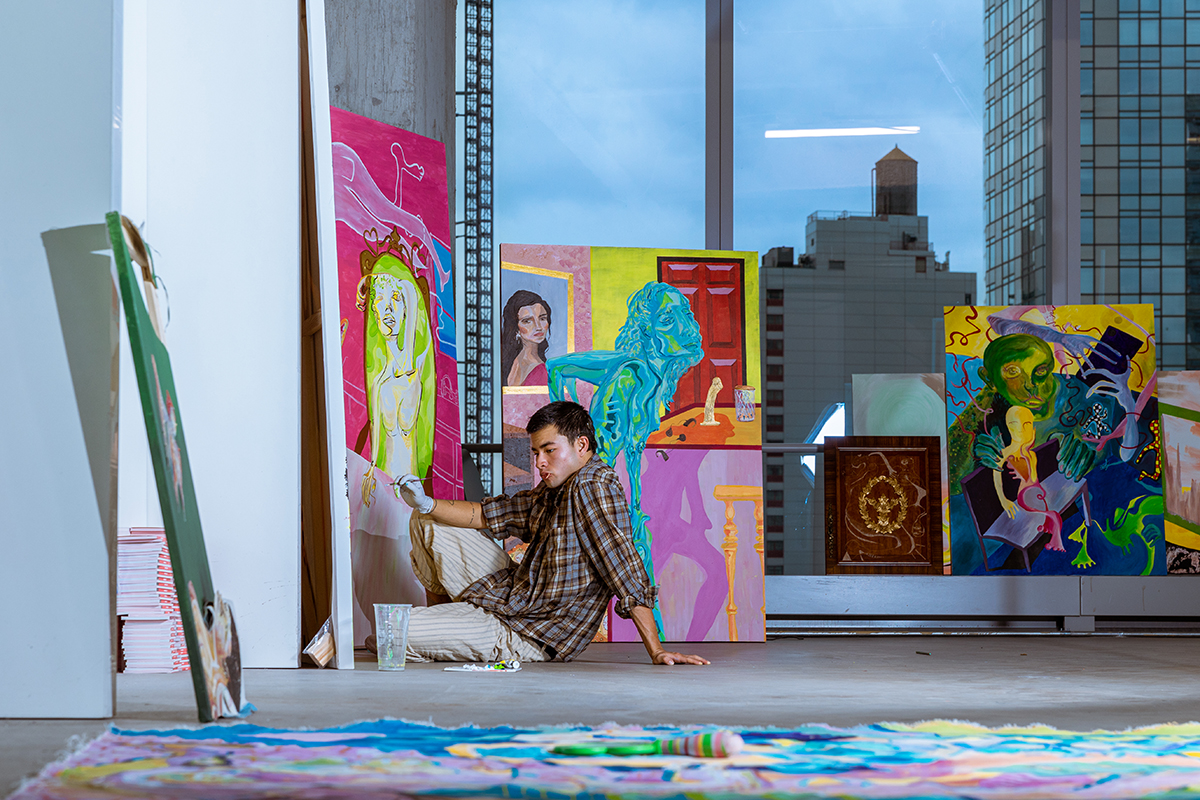
Chella Man during his residency at the World Trade Center. Photo by Josh Katz
Chella Man understands the importance of representation and aims to be the kind of role model he wishes he had growing up. Just last month, Chella hosted an open discussion on ‘Creativity and The Productivity of Resting.’ Chella has been a great mentor to many of the underrepresented artists in our community, as he talks about authenticity and remaining true to oneself.
Read more: Volta’s Kamiar Maleki On Supporting New Artistic Talent
Tourmaline’s mentorship and involvement at Silver Art has particularly stood out because Silver Art Projects provided her with new space and perspective to connect and inspire emerging artists in our community. A member of the Black trans community, she’s passionate about sharing and celebrating the stories of her predecessors. Last month, Tourmaline took a group of the artists to visit her work on view in The Afro Futurist Period Room at The Met, encouraging other artists to live joyfully, confidently and authentically.
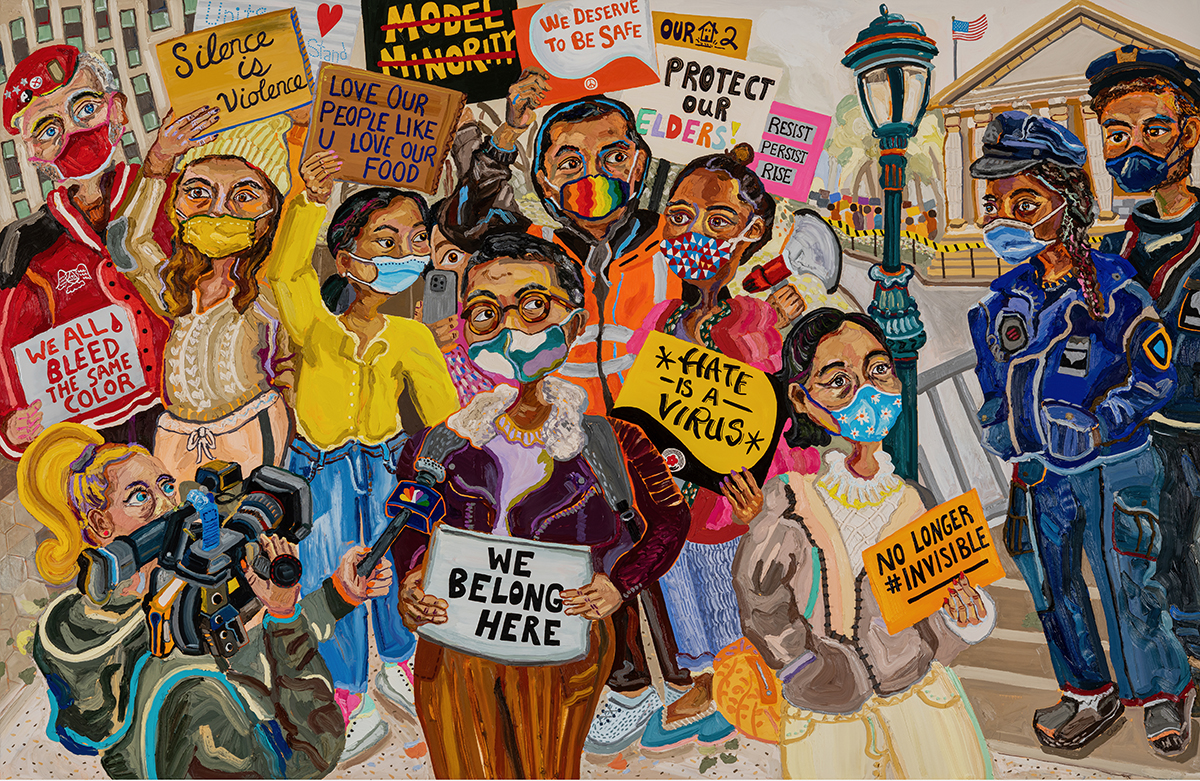
#StopAsianHate by Susan Chen, an artist from Silver Art Projects
LUX: How is your vision for social justice informing upcoming projects?
Cory Silverstein: Our program is guided by the mission of supporting underrepresented artists. Artists in our 2020-2021 cohort, for instance, were all selected for their focus on social justice and activism. As an organisation, we are equally committed to developing programs that nurture more awareness and equality. In partnership with Art for Justice, we recently announced an extended commitment to supporting formerly incarcerated artists by dedicating a quarter of all future residency spaces to ex-prisoners. We are also seeking to bring in other art forms and interests to widen the conversation and offer greater support.
Find out more: silverart.com








